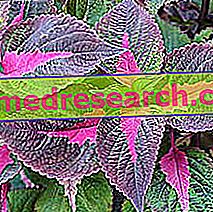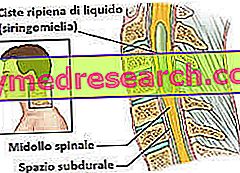What is that?
What is Galium Heel?
Galium Heel is a homeopathic product indicated for the homotoxicological drainage of the organism.

More precisely, Galium Heel is a homeopathic medicine composed of the association of various homeopathic remedies, among which we find Galium album and Galium aparine (hence the name of the final product).
Galium Heel is available in the form of oral drops and solution for injection . The decision to use a certain preparation rather than the other is solely up to the homeopathic doctor who - on a strictly individual basis - will evaluate which homeopathic remedy is most suitable for each patient.
Please note
Galium Heel is a homeopathic product without therapeutic indications .
The practices described in the following article are not accepted by the medicine, they have not been subjected to experimental tests conducted with scientific method or have not passed them. They could therefore be ineffective or even be harmful to health .
The information given is for illustrative purposes only. If in doubt, consult your doctor.
Indications
What is Galium Heel used for?
As mentioned, Galium Heel is a homeopathic medicine used for homotoxicological drainage, because - according to the criteria of homeopathic medicine - thanks to its complex and rich composition, it is able to perform a deep purifying action of the cellular matrix and an action detoxifying the entire body, acting as a sort of "centrifuge" that carries toxins from the inside to the outside of the body.
More in detail, this homeopathic product proves to be useful in what are referred to as " deposition phase pathologies "; that is in the case of conditions and disorders defined as hypertrophic and / or hyperplastic of different types (cutaneous, gynecological, aesthetic, gastrointestinal, etc.). Some examples of disorders in which the intake of Galium Heel can be useful are acne, swelling, obesity, cysts, etc.
Composition
What does Galium Heel contain?
As mentioned, Galium Heel is composed of a set of different homeopathic remedies, carefully chosen in order to create a homeopathic product capable of exercising the homotoxicological drainage of the organism. Given the two different routes of administration, the composition of Galium Heel in oral drops is slightly different from the composition of Galium Heel solution for injection.
Galium Heel oral drops
The ingredients of Galium Heel oral drops are: Galium aparine D3; Galium album D3; Sedum acre D3; Sempervivum tectorum D4; Clematis recta D4; Thuja occidentalis D3; Caltha palustris D3; Ononis spinosa D4; Juniperus communis D4; Hedera helix D4; Betula alba D2; Saponaria officinalis D4; Echinacea angustifolia D5; Calcium fluoratum D8; Phosphorus D8; Aurum metallicum D10; Argentum metallicum D8; Apis mellifera D12; Acidum nitricum D6; Pyrogenium D6; Urtica urens D3. Ethanol 35%.
Galium Heel solution for injection
The ingredients of Galium Heel solution for injection are: Galium aparine D3; Galium album D3; Sedum acre D3; Sempervivum tectorum D4; Clematis recta D4; Thuja occidentalis D3; Caltha palustris D3; Ononis spinosa D4; Juniperus communis D4; Hedera helix D4; Betula alba D2; Echinacea angustifolia D5; Calcium fluoratum D8; Phosphorus D8; Aurum metallicum D10; Argentum metallicum D8; Apis mellifera D12; Acidum nitricum D6; Urtica urens D3. Water for injection, sodium chloride.
Please note
The letter and number shown below each ingredient represent the homeopathic dilution type used for each remedy contained in Galium Heel.
Detailed information on the ingredients of Galium Heel
Each ingredient contained in Galium Heel carries out a particular activity which - associated with the activities carried out by the other components - gives the final homeopathic product the purifying and detoxifying characteristics mentioned above.
Below, the properties of these ingredients will be briefly described:
- Galium album : this homeopathic remedy is obtained from the homonymous plant Galium album (better known as white rennet). It stimulates the elimination of waste from the connective tissue.
- Galium aparine : also this homeopathic remedy is obtained from the homonymous plant Galium aparine, better known with the vulgar names of "attacker" or "attacker", attributed to it because of the rough hairs that cover it. However, the Galium aparine homeopathic remedy carries out an antidegenerative action, slows down the tendency to aging and cellular destructuring and helps renal tropism. This latter action promotes diuresis and the resolution of edema.
Curiosity
The name "Galium" comes from the Greek " gala ", whose meaning is "milk". This particular name derives from the fact that many species belonging to the genus Galium contain enzymes capable of curdling milk.
- Sedum acre : it is a homeopathic remedy obtained from the acre borracina and has an anti- degenerative activity .
- Sempervivum tectorum : homeopathic remedy obtained from the greater evergreen plant (also known as Jupiter's beard); has an antidegenerative and antineoplastic action .
- Clematis recta : remedy obtained from the upright clematis, a poisonous perennial plant. This homeopathic remedy carries out its activity on the lymphatic organs, limiting its hypertrophic and hyperplastic development. Furthermore, it also acts on vesicular and pustular eczemas .
- Thuja occidentalis : is another homeopathic remedy of vegetable origin obtained from white cedar. It has an antisicotizing activity (that is, it limits the formation of waste and toxins that accumulate in the matrix), stops the chronicity of the pathologies, acts on neoformations and water retention.
- Caltha palustris : homeopathic remedy obtained from the marsh calf which has a detoxifying action .
- Ononis spinosa : remedy of vegetable origin obtained from the homonymous plant and endowed with a corticosurene and diuretic action ; eliminates matrix waste through the kidney.
- Juniperus communis (juniper): homeopathic remedy with a diuretic activity thanks to which it favors the elimination of the matrix waste through the kidney.
- Hedera helix (ivy): remedy that stimulates the function of the connective antagonizing the gelation.
- Betula alba (birch): another remedy with diuretic action, to which is added a stimulating action on the production of bile ( choleretic activity ); in addition, it drains waste through the lungs.
- Saponaria officinalis : homeopathic remedy obtained from the saponaria plant that has diuretic, choleretic, expectorant and diaphoretic activity (elimination of toxins through sweat).
- Echinacea angustifolia : homeopathic remedy obtained from the Echinacea angustifolia plant and endowed with an immunostimulant action .
- Calcium fluoratum : homeopathic remedy of mineral origin that acts on sclerosis and fibrosis . The destructuring of the fibrillar part (collagen and glycosaminoglycans) of the connective matrix slows down. It modulates the tendency to lymphadenomegaly (swollen lymph glands).
- Phosphorus (phosphorus): homeopathic remedy that intervenes on excessive cellular catabolism, helps to reduce metabolic acidosis, modulates the tendency to peripheral vascular insufficiency and exerts a protective action against tissues of important organs such as heart, liver, brain and lungs.
- Aurum metallicum (gold): homeopathic remedy of mineral origin that helps to reduce the tendency to the lymphatic accumulation of toxins .
- Argentum metallicum (silver): is another homeopathic remedy of mineral origin. It works by counteracting the chronicity of the pathologies and hindering the tendency to gelify the connective tissue.
- Apis mellifera (ape): homeopathic remedy of animal origin obtained, in fact, from the bee. It has anti-edema activity and appears to be effective against streptococci and staphylococci.
- Acidum Nitricum (nitric acid): homeopathic remedy capable of performing an antidegenerative activity thanks to which it reduces the risk of matrix ulceration.
- Pyrogenium : is a homeopathic remedy of animal origin that is prepared starting from muscle muscle tissue, pig muscle tissue and human placenta. It is considered the "antibiotic" homeopathic remedy par excellence. It works by reactivating the connective function and promoting the destruction of toxins.
- Urtica urens (nettle): homeopathic remedy capable of promoting a draining action through the kidney.
Doses and method of use
Doses and methods of use vary depending on various factors, such as the route of administration of the homeopathic remedy (oral or parenteral), the type of formulation used, the type and severity of the disorder to be treated (acute or chronic phase) .
Therefore, the homeopathic doctor will determine which dosage and which route of administration best suits each patient. Furthermore, to increase the effectiveness of the treatment, the doctor may decide to administer Galium Heel in association with other homeopathic remedies.
However, below are some indications of the doses of Galium Heel usually used in therapy.
Galium Heel Oral Drops
When used in the form of oral drops, we recommend taking 10-15 drops of Galium Heel three times a day. The drops must be diluted in a little water, sipped slowly and held in the mouth for a few moments before being swallowed.
Galium Heel Solution for Injection
When Galium Heel is used as a solution ready for injection, the dose used may vary depending on whether the disorder to be treated is in the acute phase or in the chronic phase:
- Acute phase : it is usually recommended to inject one vial of Galium Heel per day intramuscularly, subcutaneously or intravenously. In principle, the treatment carried out in this way should not be carried out for more than seven days, unless it is the homeopathic doctor who prescribes it.
- Chronic phase : for the treatment of disorders in chronic phase, usually, we recommend the injection of a vial of Galium Heel 1-3 times a week. After improving symptoms, the weekly dose can be reduced.
Please note
Since the injection of a medicine is not a simple operation that can be performed by anyone, but is a delicate procedure that must be performed by expert personnel, it is necessary to consult your doctor for the administration of Galium Heel parenterally.
Side effects
Can Galium Heel cause side effects?
At present, there are no known side effects from taking Galium Heel. However, a temporary worsening of symptoms may occur at the start of treatment. If this deterioration does not resolve within a short time, you should immediately seek advice from your doctor.
Pregnancy and breastfeeding
Can Galium Heel be used in Pregnancy and during Lactation?
Galium Heel can be used by pregnant women and breastfeeding mothers only after consultation with their doctor. Therefore, if Galium Heel is not expressly prescribed by your doctor, this category of patients should not take the product.
Contraindications
There are no particular contraindications to the use of Galium Heel, except in the case in which the patient is allergic to one or more ingredients contained in it.



